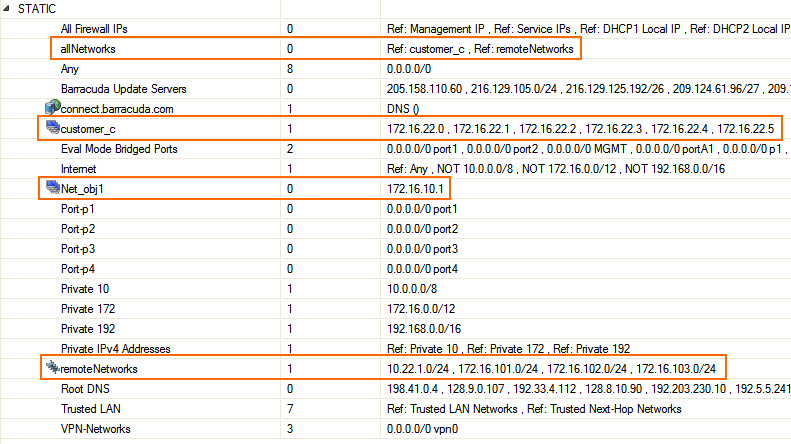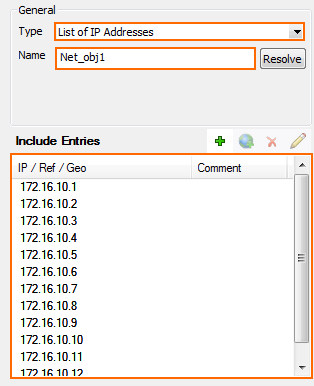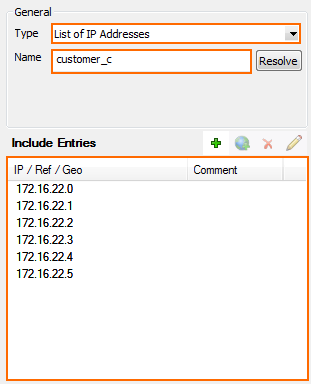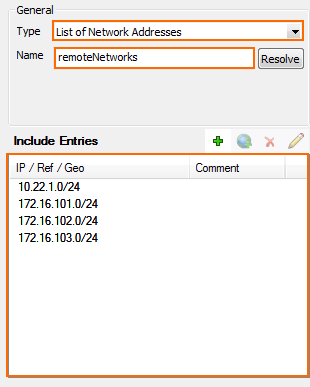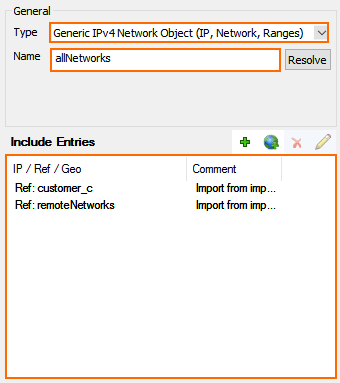You can import and update existing static network objects from a CSV file containing the network object data in plain text. Each line in the CSV file contains one entry for the imported network object containing a single IP address, network in CIDR format, or a reference to other networks objects. Mixing IP addresses, networks, and references is not allowed. For network objects containing multiple IP addresses or networks, create a line for each IP address, network, or reference. Network objects containing references are always created with the Generic Network Object type. You can import firewall objects in the Forwarding, Host, or Distributed Firewall and the Global, Range, or Cluster Firewall objects on the Control Center. If the network object already exists, the user has the option to replace it with the data stored in the CSV file. Supported network object types:
- List of IP addresses
- List of network addresses
CSV File Formatting Guidelines
Use the following guidelines to create the CSV file:
- Each value must be placed in quotes. E.g.,
"name_of_network_object" - Use a semicolon (;) to separate the values. E.g.,
"value1";"value2";"value3"
Each line is made up of the following information:
- Network Object Name – Enter the name of the network object in quotes. Can be used multiple times to add more than one value to a network object. Names of the network objects may only contain ASCII characters.
- IP address, Network, or Existing Network Object – Enter the IP address or network in CIDR format in quotes, or the name of the referenced network object.
- Network Object Type – Enter one of the supported network object types in quotes:
- "iplist" – List of IP Addresses Network Object.
- "netlist" – List of Network Addresses Network Object.
- "ref" – Reference to existing network object
- Comment – Enter a comment for objects in quotes.
Example line: "NAME_OF_NETWORK_OBJECT";"IP_ADDRESS_OR_NETWORK";"NETWORK_OBJECT_TYPE";"Comment"
Import Network Objects from a CSV File
- Go to CONFIGURATION > Configuration Tree > Box > Assigned Services > Firewall > Forwarding Rules.
- Click Lock.
- In the menu, click Networks.
- On the top right, click the import Network Object icon, or right-click in the main area and select Import Network Objects.

- Select the CSV file containing the network object definitions in the required format, and click Open.
- If a network object of the same name already exists, click Replace Existing Object to use the data stored in the CSV file, or click Skip to keep the current network object.
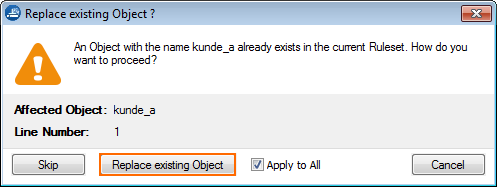
- Verify that the number of network objects to be created matches the content of your CSV file.
- Click OK.
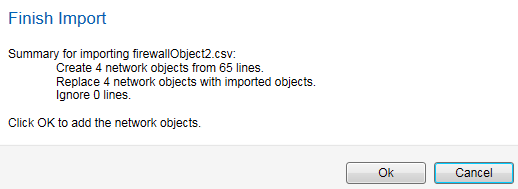
- Click Send Changes and Activate.

